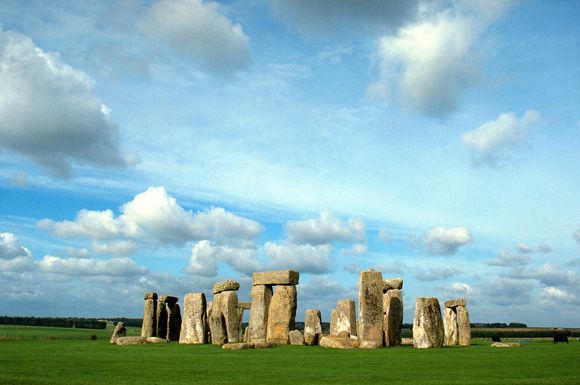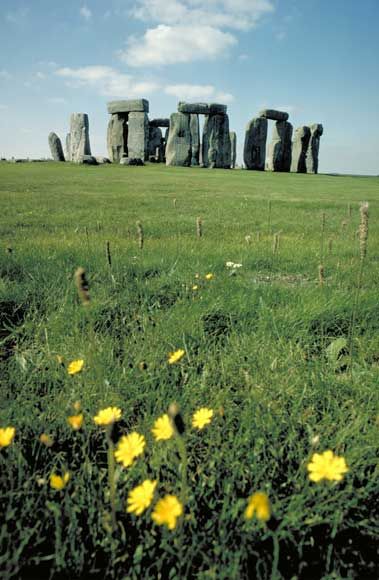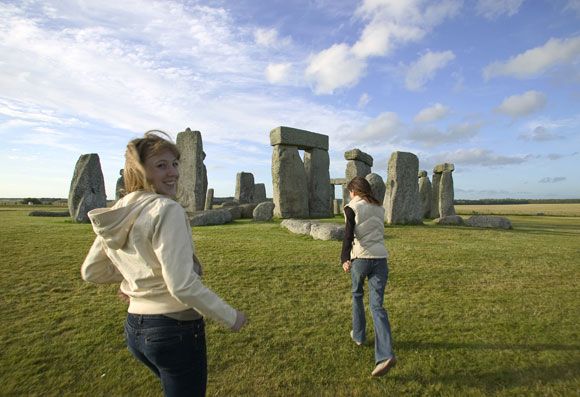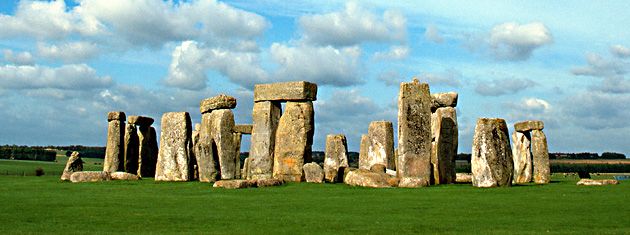A host of myths and legends surround the iconic stone circle located in the south west of England. Some tales include elements of the Arthurian legends, with Merlin in the role of architect; others claim it was the Devil himself who brought the great blocks to the Wiltshire plain from far off Ireland, while yet others say they were brought from Africa for their healing properties.
Whatever the archaeologists claim, one of the enduring theories associated with Stonehenge places the monument firmly in the ancient world of druids and paganism. And each solstice and equinox draws tens of thousands of worshippers and onlookers from around the world to celebrate. Many come dressed in flowing robes, sporting long beards and wielding wooden staffs, replica swords or flaming torches and a musical accompaniment of drums, flutes and other instruments is essential. No doubt the winter solstice – due to occur this year shortly before midnight on December 21st – will be greeted in the same 'traditional' way.
It's hard to know what the right traditions would be, of course, as archeologists and historians still haven't discovered the whole truth behind the world famous monument. What does seem certain is that some of the great stones were hauled all the way from the Preseli hills in Wales, some 250 kilometres from the plains of Wiltshire. Since building is believed to have been started back around 3,000 BC, this was a tremendous feat, if not quite so awesome as the mythical tales would have it where all the stones were floated across from Ireland on a web of magic and music.
The difficulty of transporting the monoliths isn't the only wonder that makes the Stonehenge worthy of its inclusion in the UNESCO list of World Heritage Sites. The great blocks of Welsh sandstone, bluestone and sarsen stone – some weighing 50 tons or more – had to be cut and shaped using the rudimentary tools of the time, as well as being lifted into place, making the megalithic monument a marvel of prehistoric engineering and giving us a clue about the surprising sophistication of an early society capable of orchestrating work on such a scale.
The circle of stones stands proud on the flat Wiltshire plain some 13 kilometres north of the beautiful rural city of Salisbury and 150 from London. It's iconic silhouette shows massive rectangular uprights arranged in a circle with some of the horizontal lintels still in place. The prehistoric monument is surrounded by a circular ditch and around fifty holes that may have been used for burials. Within the circle is a horseshoe shape of thirty pillars which also supported a continuous lintel made of shorter blocks.
The monument has suffered greatly over the millennia, and what remains today is only a portion of what it was, with just 17 of the giant stones still standing. Although special visits can be arranged where you can walk among the stones, usually visitors follow a trail around the site a short distance from the stones themselves. During the summer and winter solstices and the spring and autumn equinox, though, access is allowed to the stones themselves. Druid or not, it's a magical experience.













